Drive Lamb Growth with Quality Protein
Significant improvements in flock genetics over recent years have led to bigger, more prolific ewes with a higher production potential, and where grassland may have once been able to meet near 100% of a ewe’s nutritional requirements, unfortunately this economic feed no longer fits the bill with producers missing out on a potential £15 in lamb output per ewe.
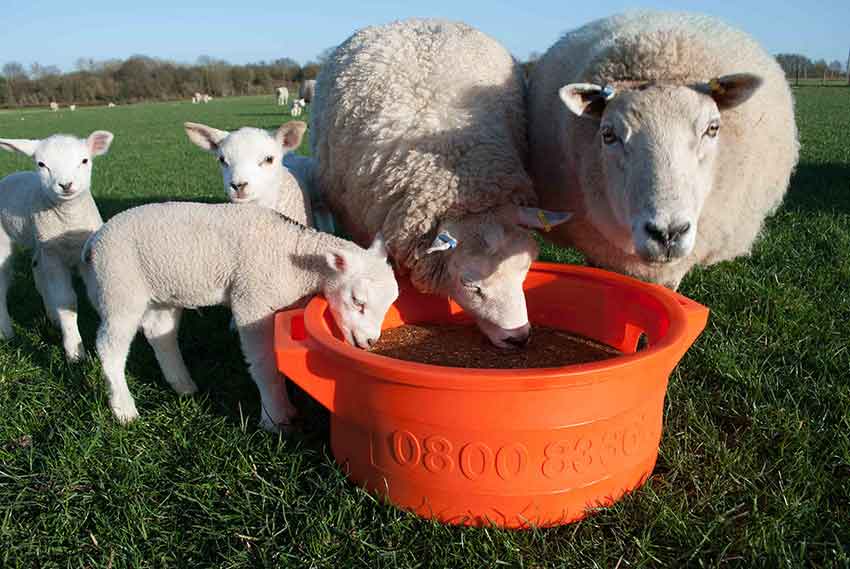
As lambing approaches, the importance of matching supplementary feeds to the nutritional quality of silage is generally well understood by sheep producers across the UK. However, after lambing and at turnout, there tends to be a lack of understanding surrounding the best and most convenient way to feed our ewes and lambs to meet lactation and suckling lamb demands.
Spring grass probably provides the highest quality nutrition to the ewe and her lambs in the annual grazing calendar. Between 8 to 9kg/day of fresh grass (20% dry matter) will supply 20-22 mega joules (MJ) of metabolisable energy (ME) per day and over 300g per day of crude protein.
However, it is estimated that genetic improvement of the commercial ewe over the last 25 years has led to an increase in protein requirements of around 30% (partly due to her higher milk production potential), which unfortunately cannot be met from grazing alone during lactation.
Key objectives post-lambing*
- High milk yield to support optimal lamb growth
- Maximum contribution from grass and forage
- Supplementary feeding to bridge any gap between requirements and forage supply
- Low rate of mastitis
- Minimise the risk of hypomagnesaemia (grass staggers)
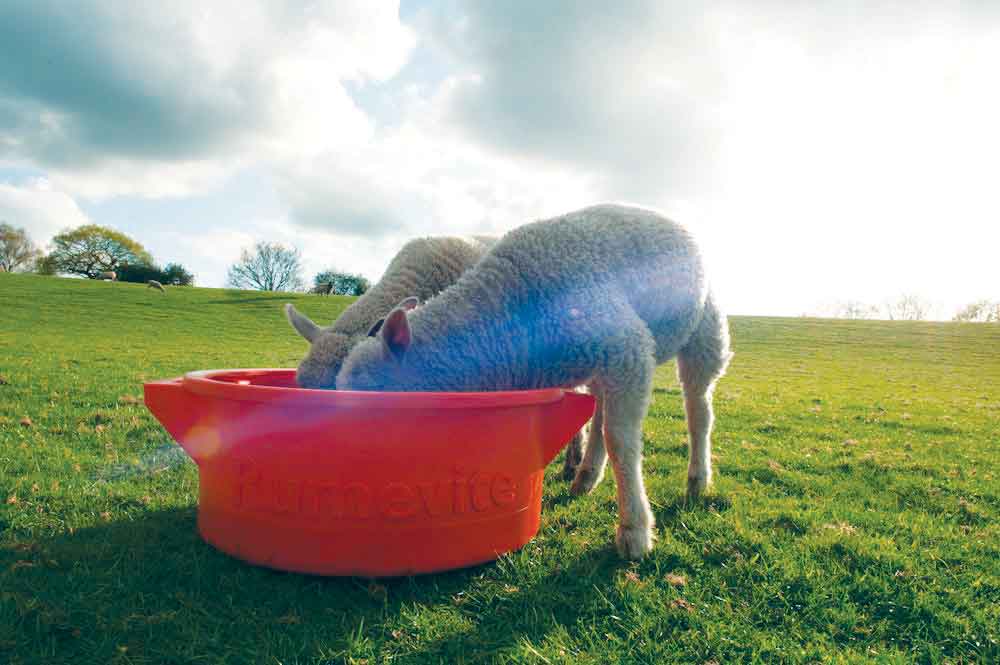
Furthermore, a ewe’s nutrient requirements will approximately double (depending on the number of suckling lambs) compared to before lambing, as she strives to meet the demands of milk production for her lambs, which peaks at three to four weeks post-lambing. In addition, the increase in voluntary feed intake at this time is slow (only 10% higher in the first week than in late pregnancy*); making ewes susceptible to negative energy balance and loss of condition.
It is also important to note that a newborn lamb is the most efficient it will ever be in its lifetime at converting milk solids into weight gain – it is estimated that for every 1kg of milk solids (5kg ewe milk) consumed, a lamb will gain 1kg of liveweight during the earliest stages of life. But, by the time weaning occurs, it will take an extra 6kg of feed to gain the same amount of weight, costing an extra £2.60** in concentrates for a set of twin lambs. With this in mind, it is much more cost effective to maximise lamb weight gain early on via a higher level of ewe milk production, rather than trying to compensate for poorer growth as weaning approaches.
The addition of protein sources such as soya bean meal containing high levels of digestible undegradable protein (DUP) known as by-pass protein, which escapes rumen degradation, can increase milk yield when adequate energy is also supplied to the ewe. Previous work has demonstrated that increasing ewe DUP supply can increase milk output by 28.5% although practically it is typically very difficult to feed high levels of DUP when ewes are at grass.
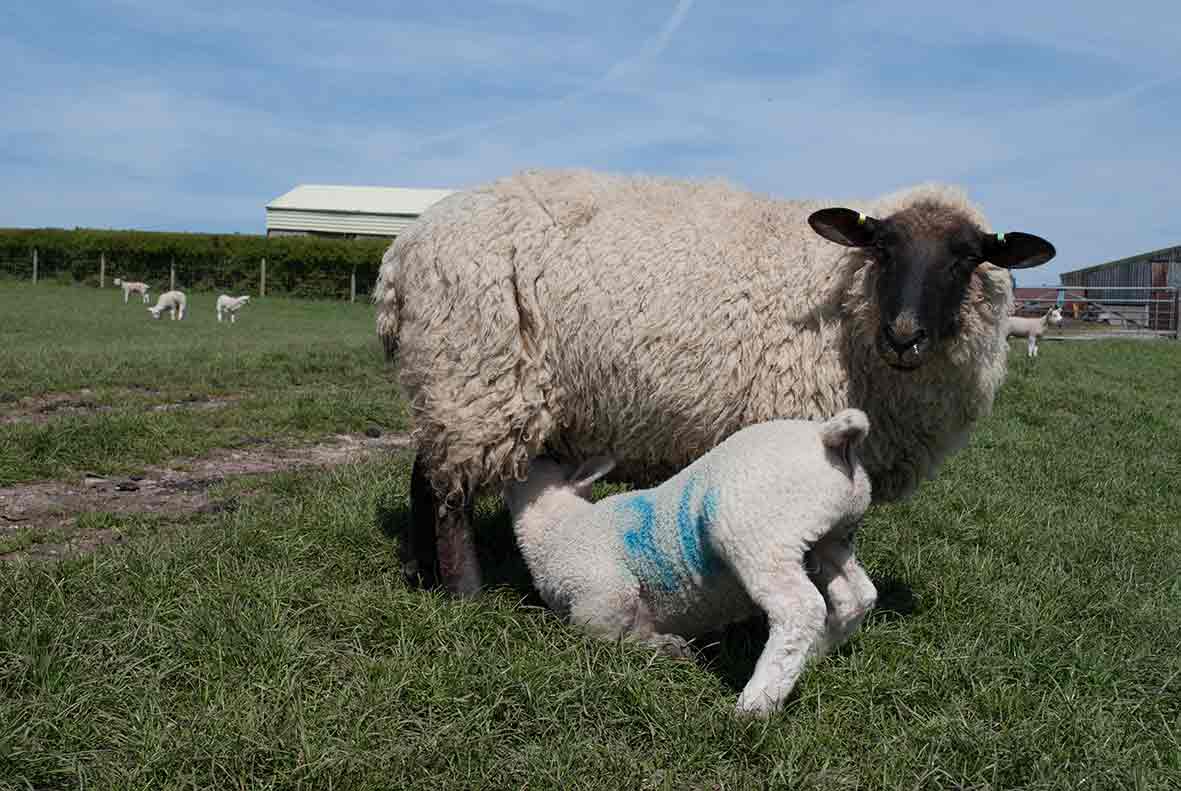
Rumevite Graze DUP
Rumenco’s Rumevite Graze DUP feed block is a step forward in sheep feeding – suitable for feeding at turnout, it can replace the need for any other concentrate where there is adequate grass (at least 4cm sward height).
Rumevite Graze DUP blocks are based on protein derived from rumen-protected soya, supplying high levels of concentrated DUP contributing to the overall protein requirements necessary to support modern ewe milk output and immunity. It also contains rumen protected methionine, normally limiting in fresh grass and also key to supporting milk production, therefore providing a further boost to a unique solution to the challenge of supporting increased milk production when ewes and lambs go to grass.
In addition, Rumevite Graze DUP has an energy content of 13MJ ME/kg DM, a similar energy level to that in spring grass therefore not diluting the energy supply to the ewe. It is also fully mineralised, including magnesium to help where there is a risk of grass staggers (hypomagnesaemia), with the benefit of increased palatability so intakes of 200-250g per ewe per day are achievable.
“Graze DUP: A unique solution to the problem of supplying bypass protein when ewes and lambs go to grass”
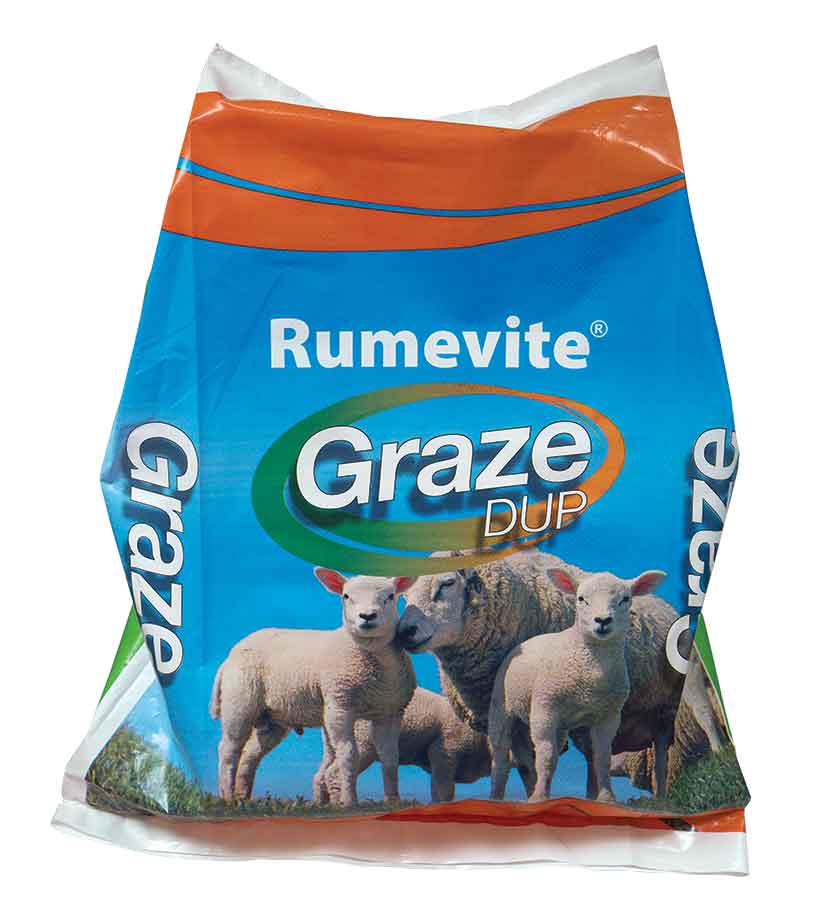
Why feed Rumevite Graze DUP this spring?
- Supplementing digestible undegradable protein (DUP) to ewes in lactation can increase milk output by up to 28.5%
- Feeding Rumevite Graze DUP can increase lamb weaning weight by up to 4.2kg per lamb (liveweight)
- Rumevite Graze DUP can replace the need to feed concentrates to ewes after lambing where there is 4cm of grass or more
- Block feeding reduces disruption to ewe-lamb bonding and grazing behaviour
Hypomagnesaemia
Hypomagnesaemia, also known as grass staggers or grass tetany, is the result of magnesium deficiency during early lactation. During this period demand for magnesium increases to 4-5g per ewe per day yet magnesium cannot be stored by the animal so daily supply is essential. Onset of hypomagnesaemia is usually rapid, resulting in death unless treated quickly.
Whilst traditional supplementary feeding of concentrates, or a protein mix, offered in troughs or on the ground may help meet requirements after lambing, they increase the potential for mis-mothering, grazing disruption and stress for all concerned. Block feeding on the other hand reduces disruption of the ewe to lamb(s) bonding and can improve grazing behaviour. In fact, the use of feed blocks is typically a very relaxed affair compared with other ways of feeding, reducing the risk of mis-mothering offering an easy way of supplementing big groups of ewes and lambs with the correct energy, protein and minerals.
Research Proven
Independent studies carried out over two lambing seasons in association with SRUC (formerly SAC) have clearly shown the benefits of offering Rumevite Graze DUP blocks at grass in maximising lamb weight gain and performance.
In the first study, a flock of commercial ewes with twin lambs were fed Rumevite Graze DUP blocks at grass with turnips, and a small amount of concentrates (until grass reached 3cm). Lambs from the Rumevite Graze DUP group were each on average 2.29kg heavier than the controls at 12 weeks of age (P<0.001) (figure 1)
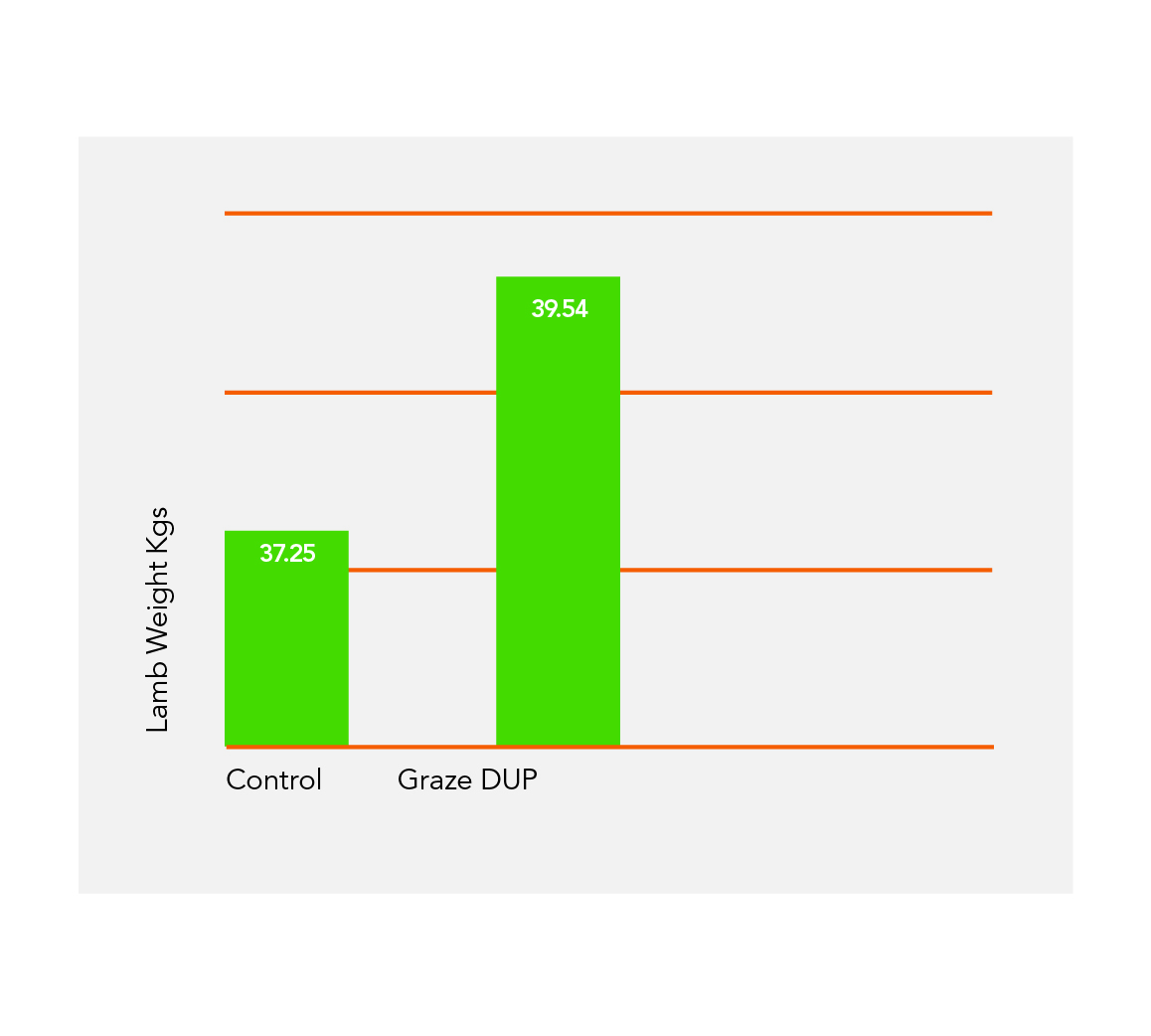
Figure 1: The effect of feeding Rumevite Graze DUP blocks on lamb 12-week weight
Similarly, a second study, on a different farm, was also carried out using twins and included a group of ewes fed LIFELINE lamb & ewe pre-lambing. These lambs were 0.8kg heavier at 12 weeks and grew at almost 20g more per day from birth, with the combined effects of feeding both products resulting in a significant response with twin lambs each weighing 4.2kg heavier at 12 weeks of age (table 1).
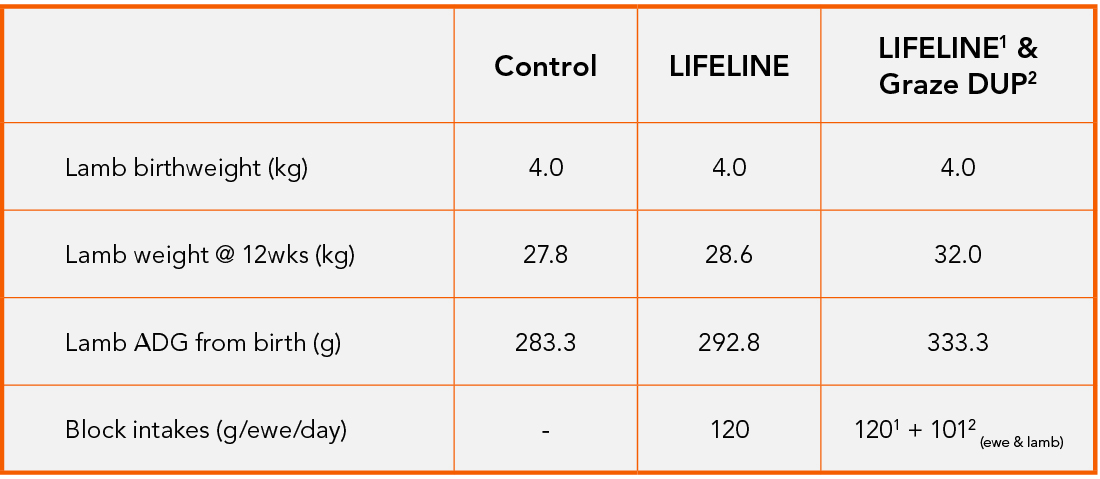
Table 1: The effect of feeding LIFELINE lamb & ewe buckets and Rumevite Graze DUP blocks on lamb 12-week weight
Feeding Rumevite Graze DUP
Feeding is recommended for at least 3 weeks after lambing to allow ewes to express their peak milk yield, after which it may be withdrawn or continued depending upon grass growth. In practice, ewes naturally tend to reduce their intake, but will have trained their lambs to consume the blocks directly, meaning block consumption by lambs will continue through to weaning.
* AHDB (2017) Feeding the Ewe
**Based on concentrate @ £220/t